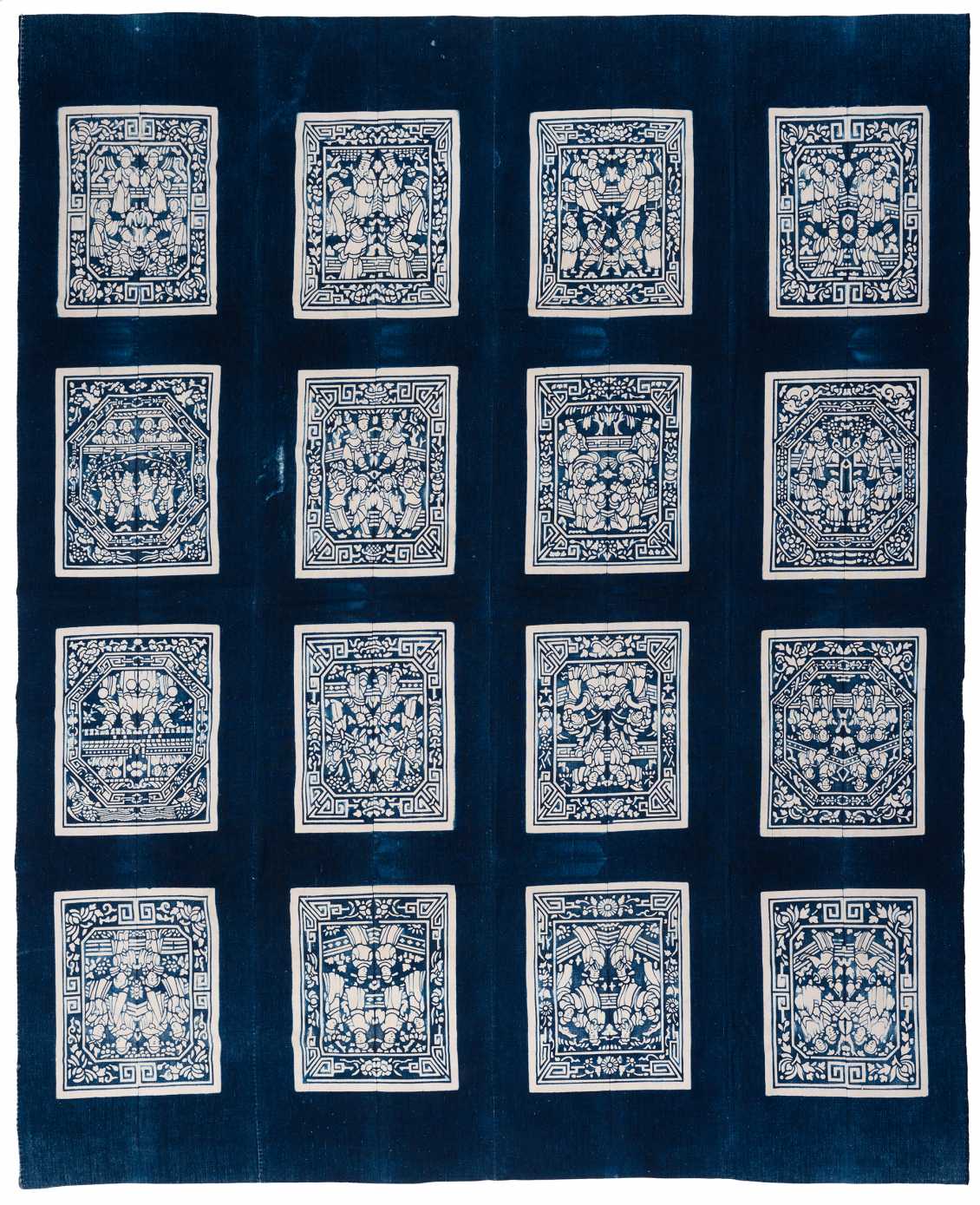Classic Blues: Cobalt Blue Porcelain and Indigo-Dyed Textiles
This exhibition examines two artforms which have maintained worldwide popularity for centuries: Chinese and Japanese blue-and-white porcelain and indigo-dyed textiles. Including more than 20 porcelain objects, dating from the 1500s to the 1900s, and seven textiles, dating from the 1700s to the 1900s, Classic Blues highlights the decorative techniques of hand-painting and stenciling used across both media. Other techniques featured include ceramic design transfers, known as decals, and resist dyeing methods utilizing woodblocks, tie-dye, batik, and applique for textiles.
At the time they were created, the blue-and-white porcelain on view were available to any customer with the means to afford them. Most were mass-produced while a few examples were special orders. Some of the earliest known examples of cobalt oxide decorated ceramics were recovered from the wreck of a West Asian ship carrying Chinese goods from China to Iraq or Iran around the year 825. In about 1330, masterful Chinese potters at Jingdezhen painted cobalt oxide pigment on refined clay, which was then glazed and fired to create blue-and-white porcelain. It quickly became a highly coveted, widely imitated global commodity.
Organic indigo blue-dye, made from the leaves of various plants, has been used to produce textiles for thousands of years. The dye softens fabric fibers making clothing more comfortable. The earliest known indigo-dyed textile fragment comes from what is believed to be a 6,200-year-old ancient temple site in Huaca, Peru. Early Chinese examples are about 2,200 years old, while one Japanese record mentions the use of indigo-dye to make garments for Emperor Nintoku (313 – 400). Examples from this exhibition include four methods of resist-dyeing and the applique technique which artisans traditionally used to make humble fabrics into works of art.
Organized by the Norton Museum of Art with support from the Asian Handicrafts Foundation USA and Morikami Museum and Japanese Gardens.
This exhibition was made possible by the generosity of John and Heidi Niblack.





